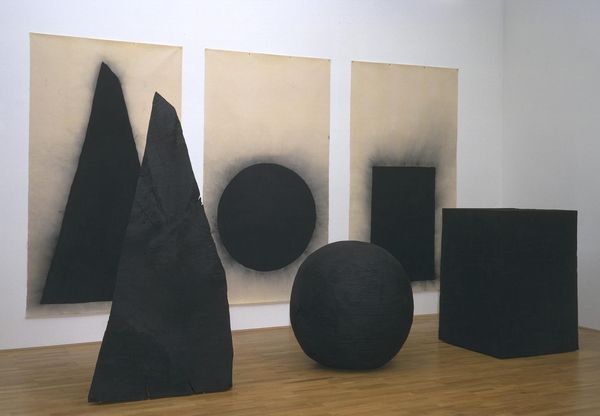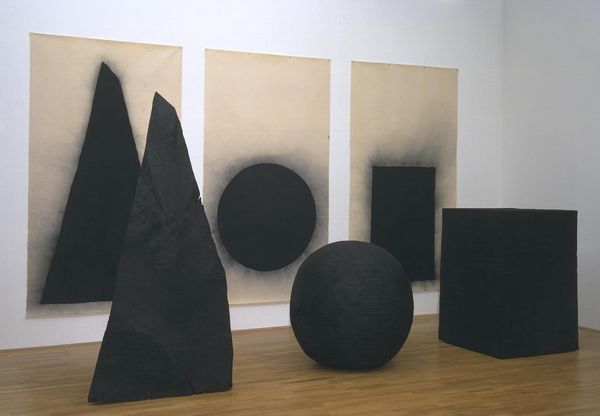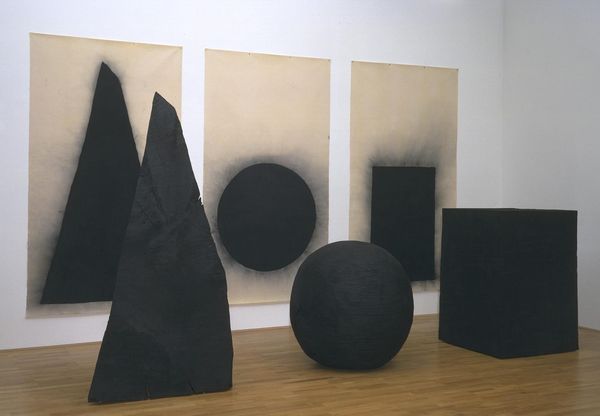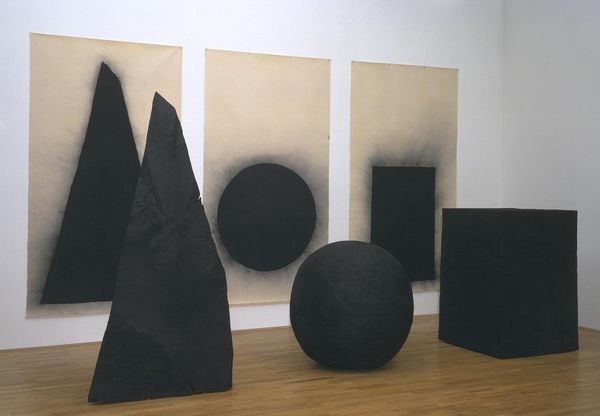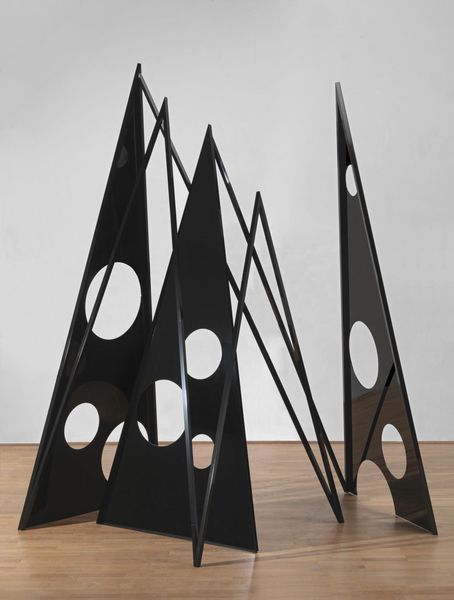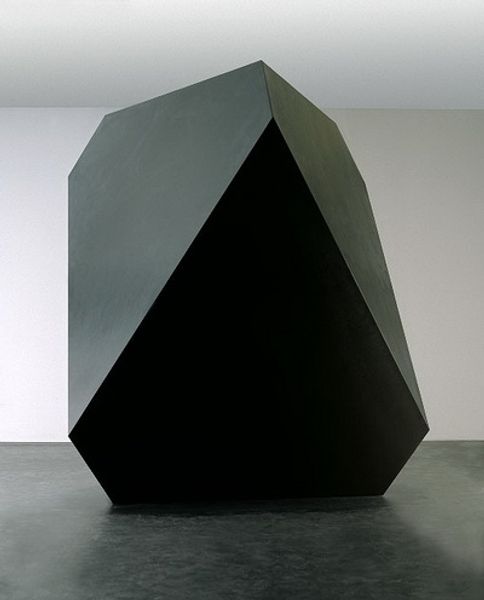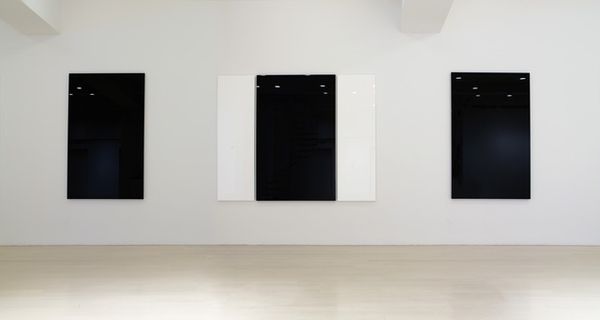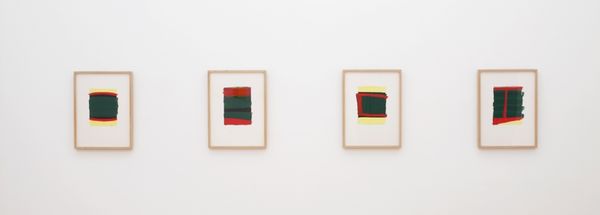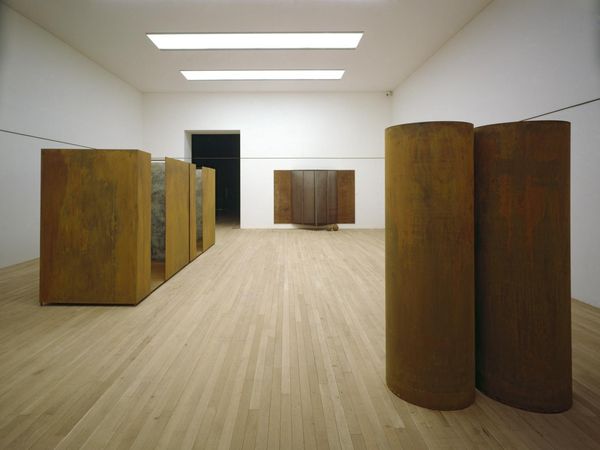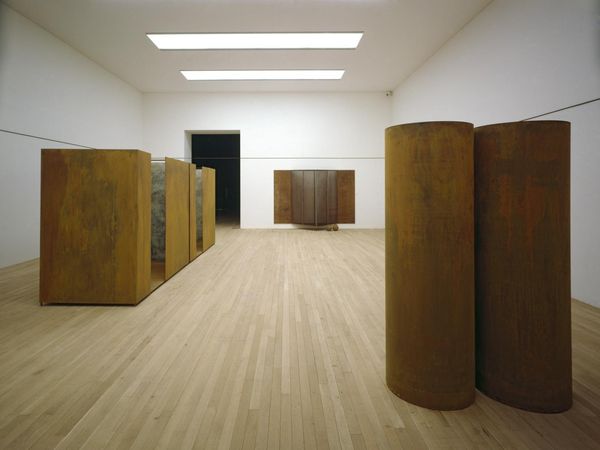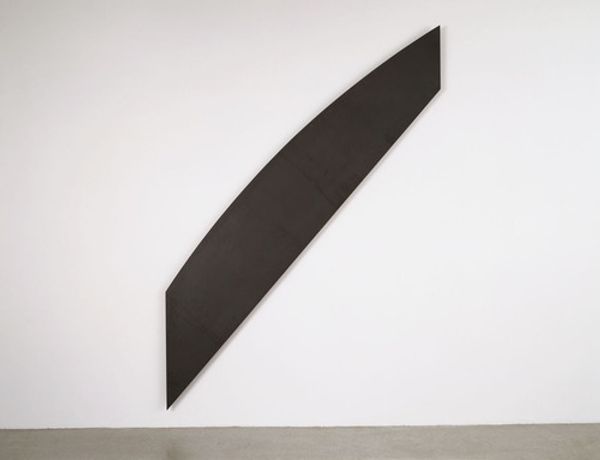
Dimensions: support: 1530 x 2750 mm
Copyright: © David Nash | CC-BY-NC-ND 4.0 DEED, Photo: Tate
Curator: There's a somberness to these shapes. The stark contrast and imposing forms feel almost… funereal. Editor: Indeed. What you’re seeing is David Nash’s "Pyramid," part of the Tate collection, featuring charred wood sculptures and related drawings. His work often explores the relationship between man and nature. Curator: I'm immediately considering the history of wood as a material, from its traditional use to its role in contemporary ecological concerns. This feels like an assertion of materiality, foregrounding labor and transformation. Editor: Absolutely. Nash manipulates these basic geometric forms and burns them to create different textures. The use of fire here is particularly striking. Fire has often been gendered as masculine and this violent act of burning the wood does have parallels to the concept of masculinity. Curator: The act of burning itself is a transformation—it alters the material at a fundamental level, and this work feels like an exploration of that potential for renewal. Editor: It's an engagement with material and process, highlighting the cycle of destruction and creation. Curator: The way Nash plays with these forms, it transcends simple geometry. Editor: Precisely. It's a powerful statement.
Comments
Join the conversation
Join millions of artists and users on Artera today and experience the ultimate creative platform.
tate 6 months ago
⋮
Pyramid is a large charcoal drawing on canvas by the British artist David Nash featuring a dense black form that represents a pyramid. Although the work’s title refers to this shape, its vertical sides are not straight like those of a conventional pyramid, but take on organic lines in which irregularities are visible. Surrounding the pyramid is a border of smudged charcoal that emanates from the shape’s otherwise clearly defined edges. Pyramid is one of six elements that make up Nash’s installation Pyramid, Sphere, Cube 1997–8, which consists of two further charcoal drawings – Sphere (Tate T07543) and Cube (Tate T07544) – along with three wooden sculptures with charred black surfaces that take the form of a pyramid, a sphere and a cube and are the same scale as the shapes depicted in the drawings (see Pyramid, Tate T07539, Sphere, Tate T07540, and Cube, Tate T07541). The three drawings are displayed in a row on the gallery wall, with each appearing alongside its corresponding three-dimensional shape, which rests on the gallery floor in front of it. Although the spacing between the six elements of the installation depends on the dimensions of the room in which they are displayed, the drawings are usually positioned so that their lower edges are approximately 35 cm from the floor, and the spaces between the drawings can range between 5 cm and 30 cm, with the sculptures being centred on their corresponding drawing.
